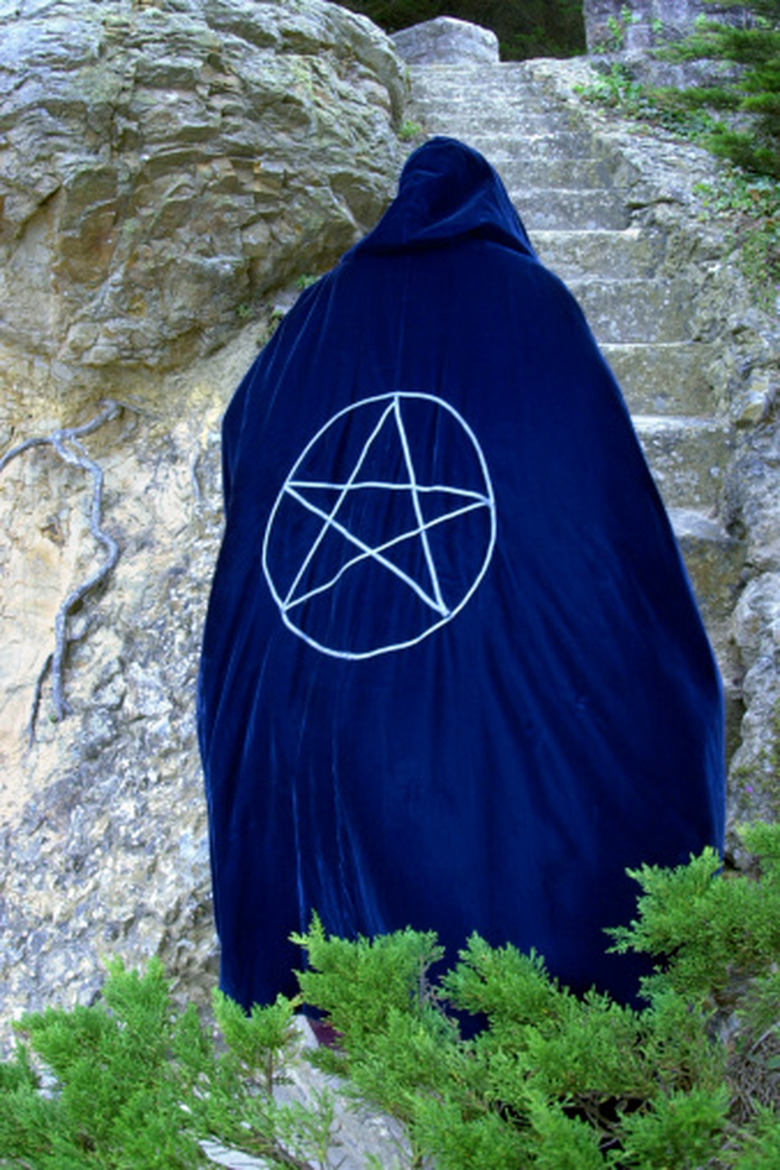How To Draw A Perfect Pentagram
A pentagram is a symmetrical, five-pointed star drawn in a continuous line without lifting the pencil from the page. The pentagram has long been associated with witchcraft and the occult. In the Middle Ages people often wore pentagrams on their clothing or carved them into the frames around their doors and windows in the belief that they would ward off evil spirits. Originally, it was the symbol of Venus, the goddess of love The five points may represent the five basic elements: fire, water, air, earth and spirit.
Step 1
Draw a circle using the compass or by tracing around the outer edge of a circular object such as an upside-down drinking class.
Step 2
Mark a spot on the top of the circle, at the "12 o'clock" position if the circle was the face of an analogue clock. Align the "0" point on the protractor with the first mark at the top of the circle, then mark a second spot 72 degrees from the "0" point.
Step 3
Shift the protractor so the "0" point of the protractor aligns with the second mark drawn. Measure another 72 degrees and mark this third spot. Repeat this process two more times to mark fourth and fifth spots on the circle.
Step 4
Draw a straight line with a ruler to connect the first mark made at the top of the circle with the fourth mark.
Step 5
Move the ruler and draw a second line connecting the fourth mark to the second spot marked in step 2.
Step 6
Move the ruler again and draw a third line connecting the second mark to the fifth mark.
Step 7
Move the ruler again and draw a fourth line connecting the fifth mark to the third mark.
Step 8
Move the ruler again and draw a fifth line connecting the third mark back to the first mark, completing the pentagram.
Things Needed
- Pencil
- Compass or circular object
- Ruler
- Protractor
TL;DR (Too Long; Didn't Read)
Use a sharply-pointed pencil to mark the spots on the circle in the precise location measured on the protractor.
Cite This Article
MLA
Silver, Freddie. "How To Draw A Perfect Pentagram" sciencing.com, https://www.sciencing.com/draw-perfect-pentagram-8547385/. 24 April 2017.
APA
Silver, Freddie. (2017, April 24). How To Draw A Perfect Pentagram. sciencing.com. Retrieved from https://www.sciencing.com/draw-perfect-pentagram-8547385/
Chicago
Silver, Freddie. How To Draw A Perfect Pentagram last modified March 24, 2022. https://www.sciencing.com/draw-perfect-pentagram-8547385/
